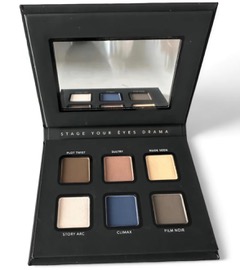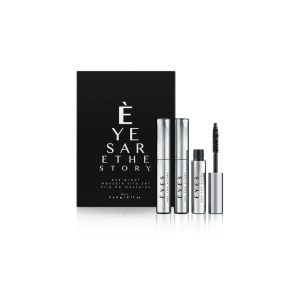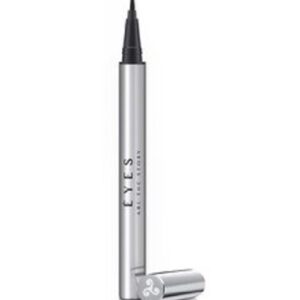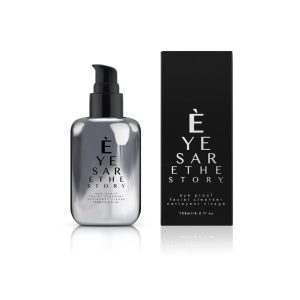Enhance Your Makeup Skills While Prioritizing Eye Health: Solutions for Dry Eyes
In today’s dynamic beauty landscape, women face a unique dilemma: how to achieve stunning makeup looks while safeguarding their eye health. As we master techniques such as applying a flawless winged eyeliner, layering volumizing mascara, and perfecting the smoky eye effect, many are unexpectedly challenged by dry eye syndrome.
This syndrome arises when the eyes fail to produce adequate tears or when the tears evaporate too quickly, prompting a reevaluation of makeup techniques. The discomfort and irritation associated with dry eyes can deter some individuals from wearing makeup altogether, which can be disheartening for those who enjoy expressing their creativity through cosmetics.
Discover the Innovative Brand ÈYES ARE THE STORY: Merging Science with Beauty
At the forefront of this transformative movement is ÈYES ARE THE STORY, a groundbreaking brand dedicated to combining scientific research with innovative beauty solutions. The inspiring background of founder Amy Gallant Sullivan illustrates her profound commitment to eye health and her family’s impactful legacy in the field.
Amy’s upbringing, surrounded by healthcare experts, fostered a deep appreciation for the complexities of ocular health. Her father, David A. Sullivan, served as an esteemed Associate Professor of Ophthalmology at Harvard Medical School, while her brother, Benjamin D. Sullivan, was instrumental in establishing TearLab, now recognized as ScoutPro under Trukera Medical.
Moreover, her mother, Rose, an intensive care nurse, provided invaluable insights into conditions like dry eye disease (DED) and meibomian gland dysfunction (MGD).
Growing up in such a health-conscious environment naturally heightened Amy’s awareness of ocular surface disease (OSD) and its far-reaching implications. Her involvement with the Tear Film & Ocular Surface Society (TFOS) further highlighted the urgent demand for consumer products that prioritize eye safety.

Examining the Gender Disparity in Dry Eye Disease Prevalence
A pivotal moment in Amy’s journey occurred when she discovered that dry eye disease affects women at nearly double the rate of men. This startling insight raised an essential inquiry: What are the activities that women engage in more frequently than men?
The overwhelming answer lies in cosmetic usage. Research indicates that women typically utilize around 12 beauty products each day, while men usually use only about six, underscoring a significant difference in beauty routines.
As Amy delved deeper into her research, she uncovered troubling information regarding commonly used cosmetic ingredients.
For example, benzalkonium chloride (BAK), a preservative often found in treatments for glaucoma, is also prevalent in many cosmetic items, including eye makeup.
Even more concerning is that the permissible concentration of BAK in cosmetics can exceed that found in glaucoma medications by thousands of times, creating alarming safety issues for individuals with sensitive eyes.
This shocking realization catalyzed Amy’s exhaustive two-decade research initiative aimed at exploring the connection between cosmetics and dry eye conditions. The culmination of her efforts resulted in ÈYES ARE THE STORY—a pioneering line of beauty products and skincare specifically designed for those with sensitive eyes. Amy coined the term “optocosmetics” to reflect this innovative fusion of cosmetic and pharmaceutical science that prioritizes the safety of our eyes.
Understanding Dry Eye Syndrome: Symptoms, Causes, and Impact on Daily Life
What constitutes dry eye syndrome, and why is its incidence increasing among various populations?
Dry eye syndrome occurs when the eyes are either unable to produce sufficient quality tears for adequate lubrication or when the tears evaporate too rapidly.
This condition can lead to a variety of uncomfortable symptoms, which may include:
- Stinging or burning sensations in the eyes
- A gritty or sandy feeling in the eyes
- Redness and irritation
- Blurred vision that can interfere with daily activities
- Increased sensitivity to light, which can be bothersome
- Challenges in comfortably wearing contact lenses
Exploring the Complex Dynamics Between Makeup Use and Dry Eye Symptoms
The relationship between makeup and dry eyes is intricate and multifaceted. Those dazzling eyeshadows that enhance our looks can introduce tiny particles into our tear film, which may lead to irritation and discomfort.
Consider the mascara that adds volume to our lashes; it can harbor bacteria that exacerbate existing eye discomfort. Furthermore, the entire process of applying and removing eye makeup can disrupt the delicate tear film that is essential for keeping our eyes lubricated and healthy.
Why Women Experience Higher Rates of Dry Eyes: Key Factors and Insights
Women face an increased likelihood of developing dry eyes due to a host of factors. Hormonal fluctuations throughout their lives, particularly during menopause, can significantly impact tear production.
Additionally, autoimmune diseases such as Sjögren’s syndrome are more prevalent in women, further complicating this health issue. The frequent use of eye makeup and the growing popularity of false lashes can also disrupt the delicate balance essential for maintaining optimal eye health, making women particularly vulnerable to dry eye syndrome.
The Article Cosmetics for Dry Eyes: Makeup Tips for Sensitive Skin Was Found On https://limitsofstrategy.com






Reading your post really resonated with me, especially as I’ve navigated the delicate balance between my love for makeup and the ever-present challenge of dry eyes. It’s fascinating how the beauty industry is evolving not just to enhance our external appearances but also to address our internal health, particularly in relation to eye care.
It’s so interesting to hear about your experiences with balancing makeup and dry eyes. I can relate to that challenge as well. It’s like, on one hand, makeup is such a fun form of self-expression, but on the other, it can be really tough when your eyes aren’t cooperating.
It’s great to hear that my post struck a chord with you. The intersection of makeup and eye health is definitely an important conversation to have, especially for those of us who love experimenting with different looks. Dry eyes can be quite a nuisance, and it’s interesting to see how brands are starting to acknowledge this in their product development.